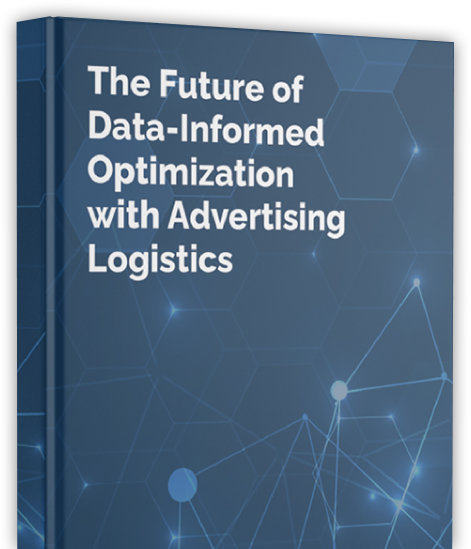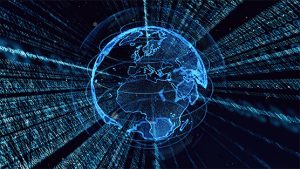Description
While AI seeks to make computers do smart things, machine learning can often be thought of as getting machines to do the dumb things really fast, over and over and over. The result is a smart thing made up of many simple building blocks.
With ML our machines can learn from the past and as a result, advertising becomes more relevant and less expensive. This means more revenue for publishers, better performance for advertisers and a better experience for users.
In this episode, learn about how programmatic advertising is an adversarial system and the role MLOps will play in its evolution. In fact, MLOps topped LinkedIn’s Emerging Jobs ranking.
Transcript
Tony Winders: Hello, and welcome to another edition of On the SPOT with Stephen Johnston, Founder and CTO of PubWise. My name is Tony Winders. And today I’ll be putting Stephen On the SPOT about another important issue for the digital advertising ecosystem and that is the impact of artificial intelligence on advertising. So Stephen, welcome, and thank you for letting us pick your brain on another important topic. I think we should start with a definition of what we mean by artificial intelligence and make sure we’re on the same page about what that is versus terms like machine learning. Do you want to put a fence around that for us?
Stephen Johnston: There could be a lot of debate in this area, and there is. The age-old debate in this field is how you define these things. For our purposes, we can at least come to a definition that structures this conversation.I look at there really being four buckets that we’re talking about. On one end is AI, then machine learning, and they’re related. Then on the extremely other side of artificial intelligence would be what we might call general artificial intelligence, or general intelligence. And on the extremely other side of machine learning, is what we would call automation, you range in there from a truly intelligent system, down to some version of what you might call an expert system, a system that’s been imbued with the knowledge of people. And that’s where automation and machine learning meet. Typically, what we’re working with is machine learning. We’re focused on leveraging compute to derive insight and predictions about future things. But they’re very much embodied by an expert understanding of the thing that we’re trying to work with. And when you get more into artificial intelligence, and definitely into general intelligence, you’re abstracting generalized or more fundamental principles into the artificial intelligence and then making decisions in this space. I would say that true artificial intelligence has limited use in our space. And you can debate about certain kinds of things, I think it’s more useful, really to focus on the machine learning component. And AI is a broader marketing term that’s used a lot.
Tony Winders: Okay, so semantics notwithstanding, it sounds like machine learning is the better term for our purposes. Where are we in the pendulum of the industry, applying machine learning versus where we’re going? Can you give us a sense of that timeline?
Stephen Johnston: There’s always been elements of computer intelligence in what we’re talking about in terms of automation. But that’s always been very discreet in terms of reacting, just a very discrete signal. If a thing is this, it’s fraud, if a thing looks like this, it’s fraud. Think of this more like a window screen and if it fits through, it’s a thing and if it doesn’t, it’s bigger or smaller than the thing that goes through. So the things we see that machine’s doing in advertising largely have been about that. Now, we’ve seen recently, more machine learning applied to where an advertisement should be, how long it should show up on the page, what kind of refresh rates, reacting to user behavior and user audiences, that sort of thing. Largely, that has been used to take away some agency from the publisher, you don’t get to design your site anymore because this machine is doing it. So we’ve largely focused our machine learning on allowing the publisher to make the core decision, and then essentially allowing the machine to assist that decision. I think of it like a dartboard where you don’t know where the bullseye is but you do know that the dart board is over here or you know it’s this big. And the publisher defines that for us. It’s a tricky metaphor without seeing some of our UI but they configure how things should be most of the time. And then the machine learning processes find optimizations of that. So in terms of the industry, I think we’re getting more sophisticated. And there’s a huge discussion about machine learning as a whole moving out of the algorithm phase and moving more into the operations phase. And that is because the scale of data and advertising is where the new opportunity is. If you couldn’t operationalize it on an ongoing basis, or it was difficult and very expensive, it was hard to apply these practices to a data set that’s always changing. And that is the reality of the advertising ecosystem. It’s not static in any way.
Tony Winders: I’m curious how siloed it is or not, there’s so much data in any one advertiser side of the ecosystem, or in a DSP, an SSP, or publisher. How do you wrap your arms around all that data? Can one player serve as the machine learning algorithm for the whole industry or does every company have to invest in their own system?
Stephen Johnston: I think we’ve got a couple of different answers to that. We’re building an end-to-end platform, at least partly, and we see the value in that because we can apply our machine learning approach across the whole system. It doesn’t end when we hand this off, but there will always be other players likely involved in some regard. I think there’s a mix of both. The most value is derived when you can get a clear picture, from buyer to seller, and then operate, without these systems interacting as much in between. I’ve often described advertising as an adversarial system, it took me a little while to realize when I told people that they were hearing something negative or antagonistic. But there’s actually a more technical definition of adversarial; a legal system is adversarial when you have two people advocating the perspective of the people they’re advocating for. That’s an adversarial system in a technical sense, and advertising is very much an adversarial system. We often embody it with goals, but really, it’s multiple systems that are advocating for their perspective on the world. We think this inventory is more valuable, we think this inventory is less valuable, we think we need this data in order to value it. And in an adversarial system, the judge is the third-party that’s supposed to be impartial. In advertising, we don’t necessarily have that but we do have the user, the customer that’s coming along. And we’re seeing more focus on, how do we balance the needs of all these systems for the advertiser to get more value out of his advertisement, for the publisher to maintain and expand revenue, and for the user not to get completely screwed by or smashed in the process between those two forces? So you have to focus on displaying ads that are nice to look at, proper refresh rates, making sure that when they display on the screen content doesn’t jump around. All those things are the impartial measure of, are we meeting these two systems needs without harming the user experience?
Tony Winders: Yeah, it’s machine learning and AI in advertising but make it better for consumers. Do you think that’s true? That at the end of the day, they get the better, more well timed ad, that sounds utopian almost. More revenue for publishers, better performance for advertisers and a better experience for users.
Stephen Johnston: If you look at all of those things as being a requirement on it, you can build better systems. If you look at one, then you build a system that’s only better for one. And if you see those three people as the participants in the value exchange, and you build systems that respect them, then you will get a better system in the long run. You can gain things in the short term. I’ve never been a fan of these algorithmic games along the way because they have short term value. To put it in concrete terms, we do some things where we allow a customer to use more demand partners than they would in other instances, but the machine learning chooses where they should be active, what traffic, it can do time of day, it can give a sense of budgets that are being spent and when and how to move these bidders around. It’s something that a human just can’t do. And what we’re seeing is an evolution in a reduction in cost of machine learning that allows us to capture these optimization opportunities, they wouldn’t have reached the cost benefit analysis before. We include and exclude bidders from a particular page view based on the signal we get, and the expectation of returned value. But in balance of how much activity is done on the page, which is essentially a user metric if you’ve got a lot of bidding activity. And maybe the page loads a little slower, maybe that user doesn’t stick around, maybe they bounce and those sorts of things. We’re making sure that the publisher has broader access to more demand sources. But instead of just shoving them in and hoping, we’re making distinctions about where they should be active in order to drive revenue.
Tony Winders: Is that what your smart path optimization technology does? SPOT. Is it really learning? What do you think about this point in time versus its ability to learn over time?
Stephen Johnston: We’ve had this trend towards DevOps, now we’re seeing ML ops. We were out pushing vendors that we work with on the ML ops side for the last few years, it’s now trendy but we’ve been pushing that envelope of how, how do you maintain, track, evaluate, and then redeploy machine learning algorithms? It used to be, a person sits down, they get a bunch of data, they create a machine learning algorithm, and then apply it almost manually. That doesn’t work in our industry. We make sure that we handle that dimension over time, because no model is perfect. To call it machine learning, it’s more like machine intuition, so it will always have either decay or imperfection active in the system. So we monitor it, we monitor how accurate it is to reality, if we expect the thing. If we say, “Hey, we expect this bidder to bid highly, we expect them to bid often, we expect them to bid in this country or not, or we expect them to bid low.” We then monitor the reality, what did they really do? And as the system drifts apart, we rebuild and relearn. And I think that that is actually as critical as what is essentially the point in time algorithmic accuracy. It doesn’t really matter how accurate a thing was for one day, that whole system has to be accurate for weeks, months and years. And that takes an operational approach, not just an algorithmic or math approach.
Tony Winders: Thus, the idea of MLOps. That’s a new term for me, and its emerging is interesting. Well, look, I know that this is a deep dive, and I could chat you up for another 45 minutes, but we’ll keep it tight. Is there anything, any parting shots on AI and machine learning in advertising that you would say that people should walk away with?
Stephen Johnston: I think there’s a lot of value in it. And people should be looking for companies that are making earnest, real contributions in that space. It’s not enough to say, “We use ML.” Dig into why and what they are applying and see how it fits your own philosophy of how you want to grow. And, if somebody you’re working with is really looking at all of the stakeholders in that transaction, the user, the buyer and the seller have to be considered. If you’re not doing that, you’re creating a short term gain.
Tony Winders: Thanks, Stephen. I always appreciate listening to you and learning from you. So we’ll wrap it there for this edition of On the SPOT with Stephen Johnston, the Founder and CTO of PubWise. I’m Tony Winders. We’ll see you next time for another interesting topic facing the digital advertising industry.
Stephen Johnston: Thanks.





